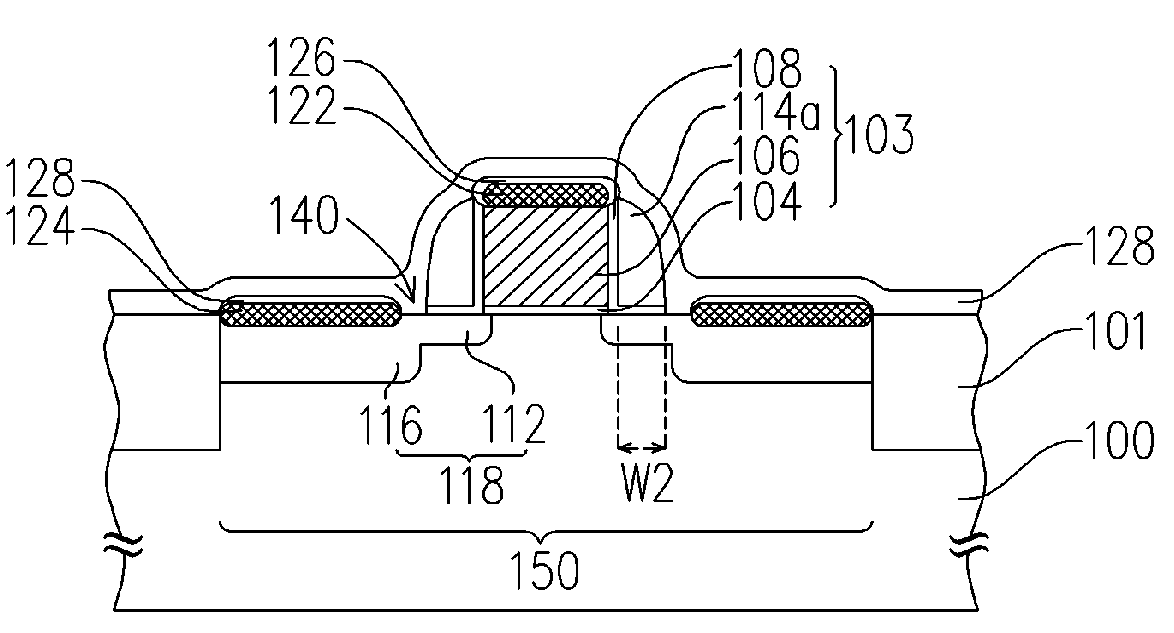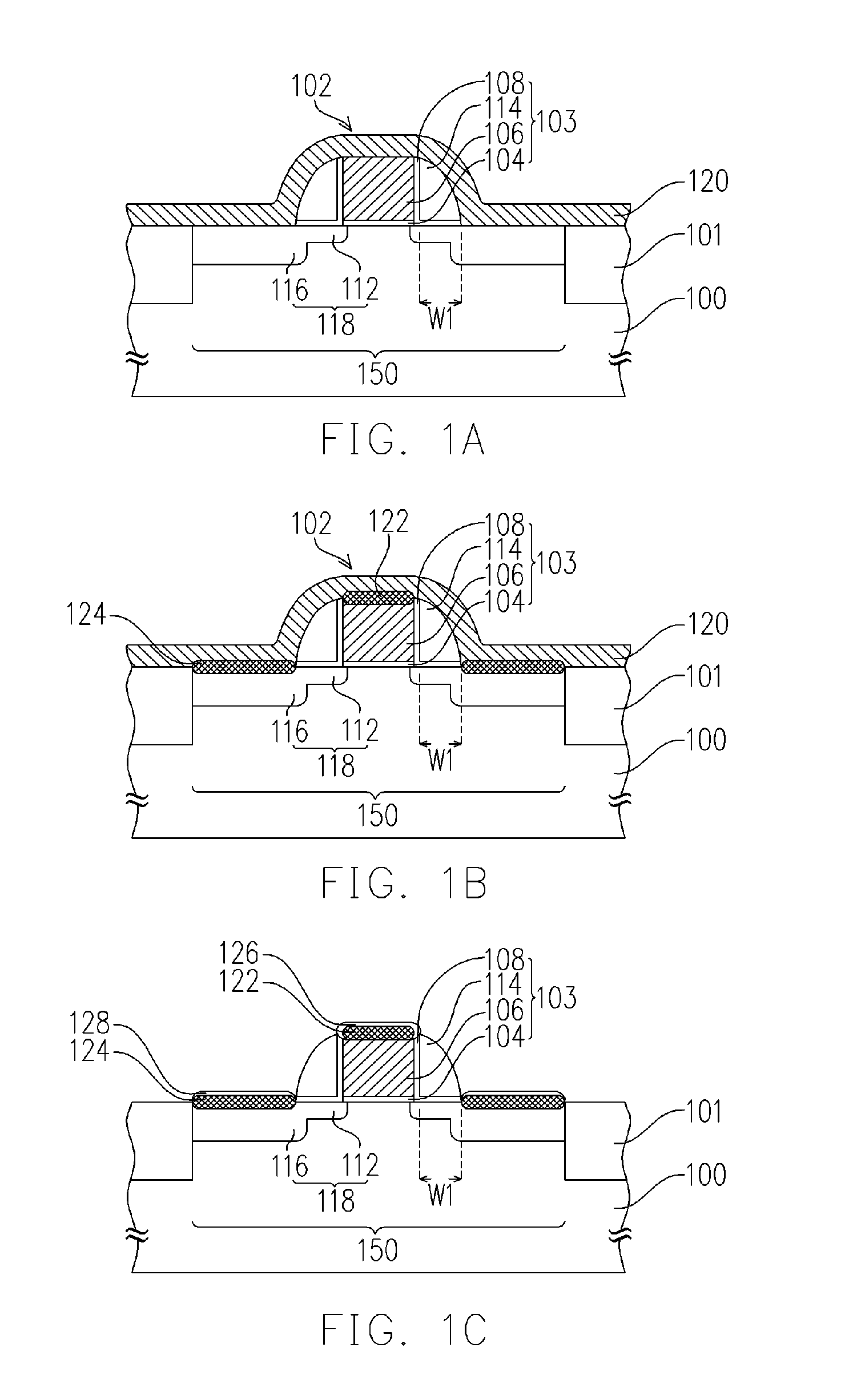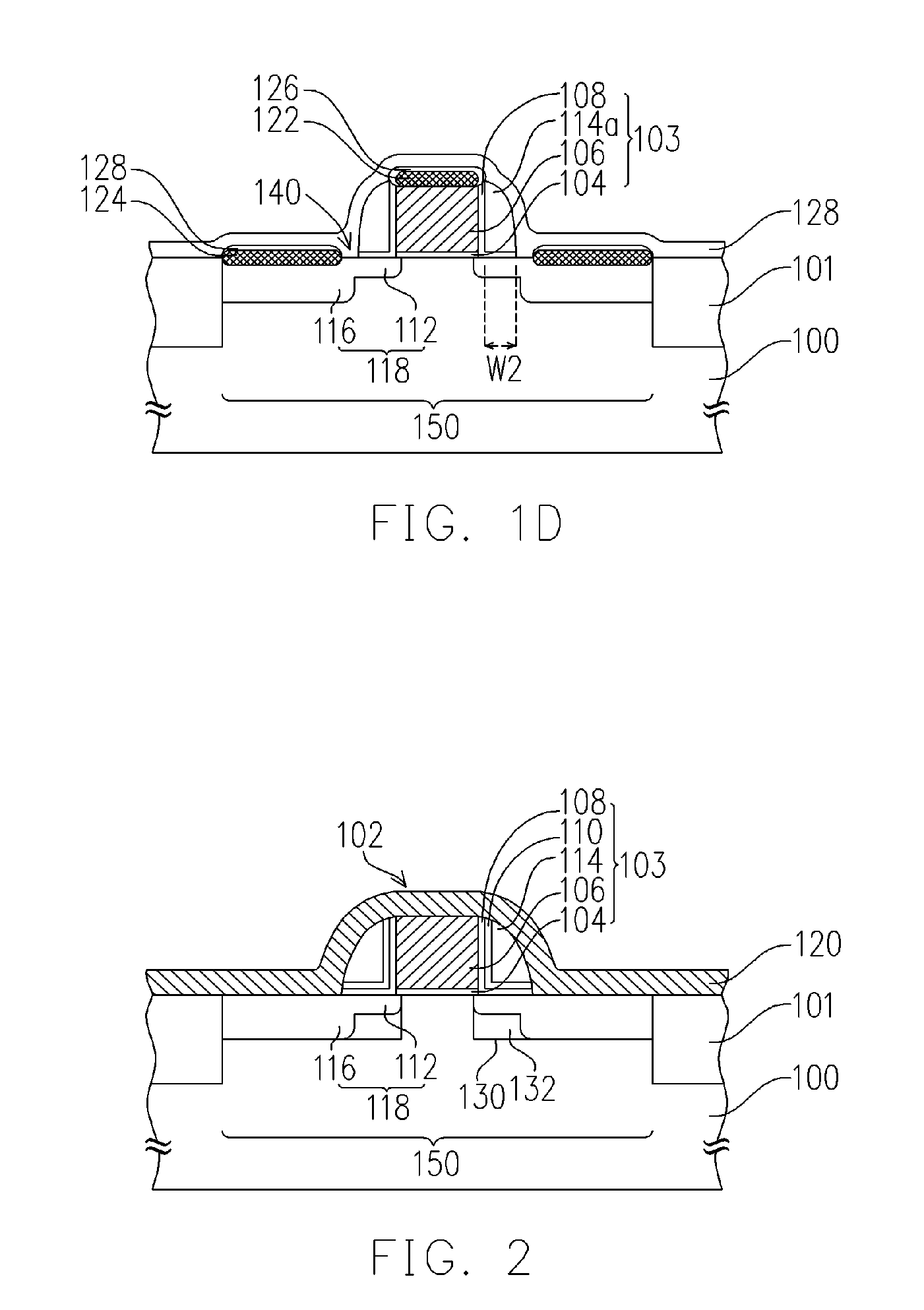Method of fabricating a semiconductor device
a semiconductor and device technology, applied in the field of integrated circuits, can solve problems such as unsatisfactory sheet resistance, and achieve the effect of reducing the width of the spacer and improving the mobility of electrons or holes
- Summary
- Abstract
- Description
- Claims
- Application Information
AI Technical Summary
Benefits of technology
Problems solved by technology
Method used
Image
Examples
Embodiment Construction
[0027]FIGS. 1A˜1D are sectional flow charts of a method of fabricating a semiconductor device according to an embodiment of the present invention.
[0028]Referring to FIG. 1A, an isolation structure 101 is formed in a substrate 100 to define an active area 150. Then, a transistor 102 is formed in the active area 150. The transistor 102 includes a gate structure 103 and a source / drain region 118.
[0029]The substrate 100 is, for example, a substrate of bulk semiconductor, or a silicon-on-insulator (SOI) substrate, such as a substrate containing silicon, epitaxial silicon, germanium, silicon germanium silicon carbide, or the combinations thereof.
[0030]The method of forming the transistor 102 is, for example, first forming a patterned gate dielectric layer 104 and a gate conductor layer 106 on the substrate 100. The gate dielectric layer 104 is, for example, a silicon oxide layer, silicon oxynitride layer, silicon nitride layer or high dielectric constant material layer with a dielectric c...
PUM
| Property | Measurement | Unit |
|---|---|---|
| temperature | aaaaa | aaaaa |
| width | aaaaa | aaaaa |
| stress | aaaaa | aaaaa |
Abstract
Description
Claims
Application Information
 Login to View More
Login to View More - R&D
- Intellectual Property
- Life Sciences
- Materials
- Tech Scout
- Unparalleled Data Quality
- Higher Quality Content
- 60% Fewer Hallucinations
Browse by: Latest US Patents, China's latest patents, Technical Efficacy Thesaurus, Application Domain, Technology Topic, Popular Technical Reports.
© 2025 PatSnap. All rights reserved.Legal|Privacy policy|Modern Slavery Act Transparency Statement|Sitemap|About US| Contact US: help@patsnap.com



